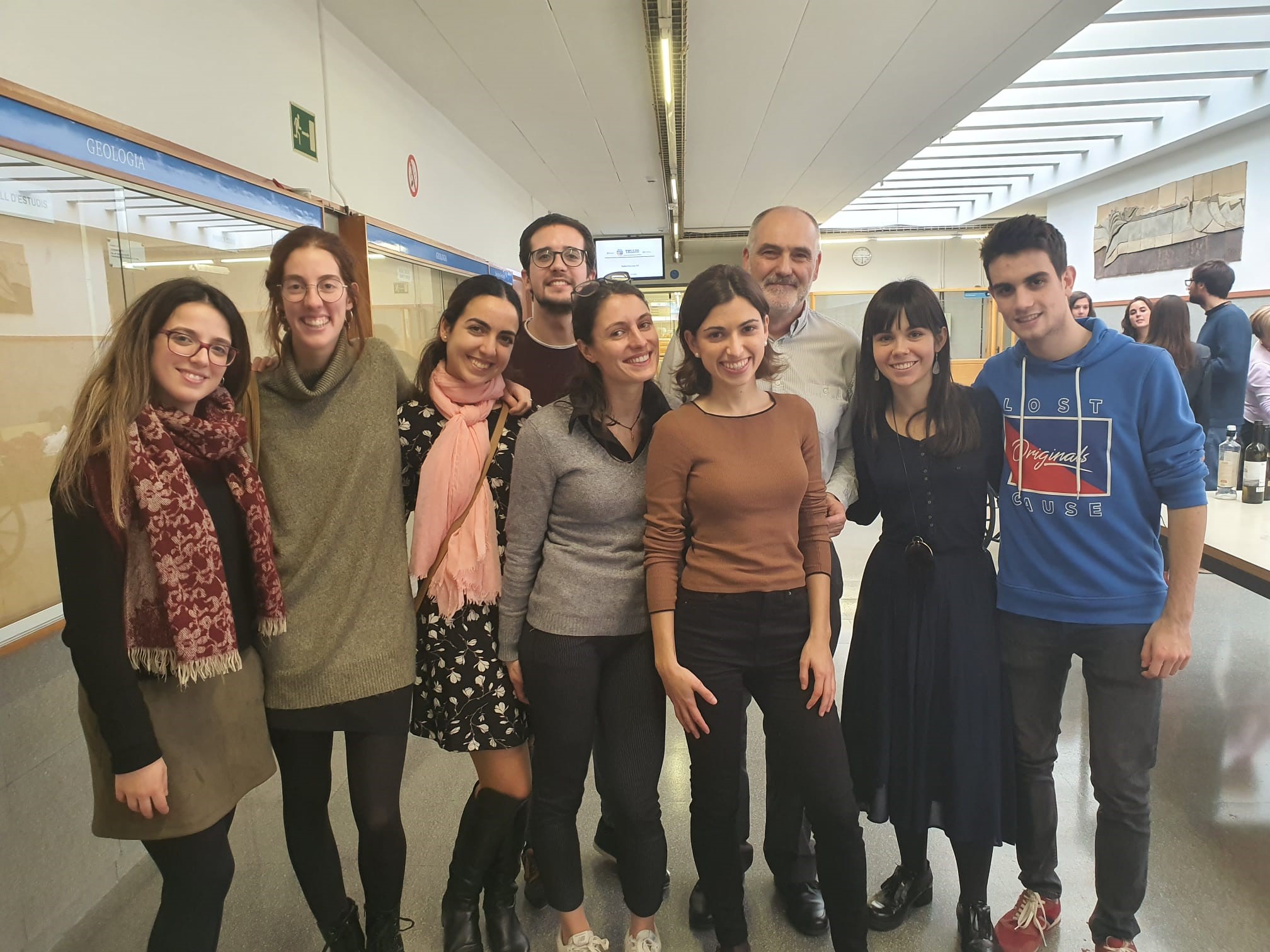Molecular Physiology Laboratory

Membre: IBUB (Institut de Biomedicina de la UB); RECI (Red Española de Canales Iónicos).
Col·laboracions: University of Oxford (GB), University of Padova (Itàlia), University of Pittsburgh (EUA), Colorado State University (EUA), University of Debrecen (Hongria).
ub.edu/ibub/research-group/antonio-felipe
- Antonio Felipe
- Daniel Sastre
- Irene Estadella
- Silvia Cassinelli
- María Navarro
- Magalí Colomer
- Carla Viñola
- Anna Benavente
The Molecular Physiology laboratory analyses the molecular physiology of ion channels. Ion channels regulate the action potential and maintain the membrane potential in mammalian cells. Their activity is crucial during synaptic transmission in the brain. They also play a key role in the cardiac action potential. Whereas their physiological role in electric tissues is clear, their function in non-electrically cells is uncertain. Thus, ion channels participates during pancreatic insulin release, salt reabsorption and cell volume control during renal filtering or acid secretion in gastric cells. Ion channels also control leukocyte physiology, being responsible for the immune response, and are at the onset of many autoimmune diseases. Furthermore, they participate during the cell cycle progression and are implicated in the neoplastic cell growth. Therefore, ion channels are considered good, effective and specific therapeutical targets for many human maladies (channelopathies). The channelosome is a complex oligomeric organization and the traffic and localization of this structure is crucial for the human homeostasis. We aim to decipher protein interactions, traffic and localization of the functional channelosome. The knowledge of the molecular determinants governing these events is crucial for understanding the role of these complex macrostructures, which are vital for the human health.
- Capera J, Pérez-Verdaguer M, Peruzzo R, Navarro-Pérez M, Martínez-Pinna J, Alberola-Die A, Morales A, Leanza L, Szabó I, Felipe A. A novel mitochondrial Kv1.3-caveolin axis controls cell survival and apoptosis. Elife. 2021; 10:e69099. doi: 10.7554/eLife.69099
- Oliveras A, Serrano-Novillo C, Moreno C, de la Cruz A, Valenzuela C, Soeller C, Comes N, Felipe A. The unconventional biogenesis of Kv7.1-KCNE1 complexes. Sci Adv. 2020; 6(14):eaay4472. doi: 10.1126/sciadv.aay4472
- Solé L, Roig SR, Sastre D, Vallejo-Gracia A, Serrano-Albarrás A, Ferrer-Montiel A, Fernández-Ballester G, Tamkun MM, Felipe A. The calmodulin-binding tetraleucine motif of KCNE4 is responsible for association with Kv1.3. FASEB J. 2019; 33(7):8263-8279. doi: 10.1096/fj.201801164RR
- Pérez-Verdaguer M, Capera J, Ortego-Domínguez M, Bielanska J, Comes N, Montoro RJ, Camps M, Felipe A. Caveolar targeting links Kv1.3 with the insulin-dependent adipocyte physiology. Cell Mol Life Sci. 2018; 75(21):4059-4075. doi: 10.1007/s00018-018-2851-7.
- Martínez-Mármol R, Comes N, Styrczewska K, Pérez-Verdaguer M, Vicente R, Pujadas L, Soriano E, Sorkin A, Felipe A. Unconventional EGF-induced ERK1/2-mediated Kv1.3 endocytosis. Cell Mol Life Sci. 2016; 73(7):1515-28. doi: 10.1007/s00018-015-2082-0.


